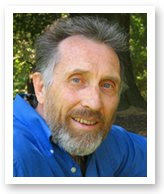If you missed Part 1, you can see it here: Panic Attacks, Part 1
If you have been told by your physician that your panic attacks are not the result of a biological condition, then you can concentrate on learning the skills needed to minimize your panic attacks. When psychologists first began working with panic attacks, our goal was to help you totally eliminate panic attacks. We eventually found this goal unworkable and unnecessary. The problem was that too much pressure existed to "never ever again have another panic attack." This level of perfect expectations would often backfire.
If you believed that you could never have another panic attack, the elephant in the room (your mind) was the thought that you just might have one. This germ of an idea would eventually grow into a fatal prediction that you, indeed, would have one. As you now know, this prediction would then bring on the panic attack. Psychologists have a different goal today: we teach people how to get to the place where they don’t care if they have a panic attack or not. This new attitude is more reasonable. It is possible because once you have the tools, then any panic attack will be short lived and under your control. In other words, it will merely be an inconvenience, not a terrifying experience.
So what do you need to do to bring your panic attacks under control? The first is to learn to activate your brain’s parasympathetic nervous system. You can do this by learning, practicing and mastering three simple skills: Natural Breathing, Muscle Relaxation, Mind Calming.
First, learn how to breathe properly (see Monday, October 6, 2008 post). When you are panicking, your breathing is shallow, fast and continuous. Learn to belly breathe by pushing out your stomach as you inhale; pull your stomach back in when you exhale. Then slow your breathing down by continuing to inhale and exhale as you spell the word "relax" at the rate of one letter per second. Finally, pause (stop breathing) momentarily after you exhale and before you take the next breathe. I call this type of breathing, Natural Breathing. This name is appropriate because this is the way that babies breath when they are born.
You also want to get rid of all the muscle tension that accompanies panic attacks. Learn to relax about 15 different muscles in your body by tensing a muscle for about ten seconds and then quickly releasing the tension and observing it for another ten seconds before tensing another muscle. This entire exercise should take between fifteen and twenty minutes. Do this slowly and observe the difference in feeling between a tense muscle and a relaxed muscle. Sometimes, relaxing a group of muscles results in a warm or tingling sensation. This indicates you are relaxing the muscle properly. Traditionally, people start with relaxing their feet, legs, stomach, back, shoulders, neck, and facial areas.
When you are finished relaxing your entire body, you want to practice calming your mind. Think of a pleasant scene (most people pick a peaceful water scene) and try to experience this as much as you can. The trick is to deal effectively with a wondering mind. You can do this by merely coming back to your chosen scene every time your mind wanders. This is often discouraging to beginners because our mind is supposed to "wander." You want to train your mind to focus on one topic for an extended period of time. This may take several weeks or months to become effective. Don’t be disheartened if the learning is slow because you will eventually be proficient. You only need to stay with this scene for a few minutes each time you practice Mind Calming.
The major mistake most people make in learning these three skills is to expect these skills to work with only minimal practice. When I teach these skills to my clients, they must practice Natural Breathing five times every hour while awake until it becomes automatic and easy. This usually takes place within a few days. They are expected to practice Muscle Relaxation four times a day. Mind Calming needs to be practiced about eight times a day.
The other skill you need to develop for your Panic Attack toolbox is to learn how to switch from worry to concern. The skills above are designed to activate your relaxation response in your body. Eliminating worry eliminates the panic attack trigger. You can learn this skill by reading our blogs on worry (there will be more to come) for checking out our book, The Worry Free Life.
If you would like to leave a comment, click on the comments link below
For an index of all blogs, go to Blog Index
Subscribe to:
Post Comments (Atom)




No comments:
Post a Comment